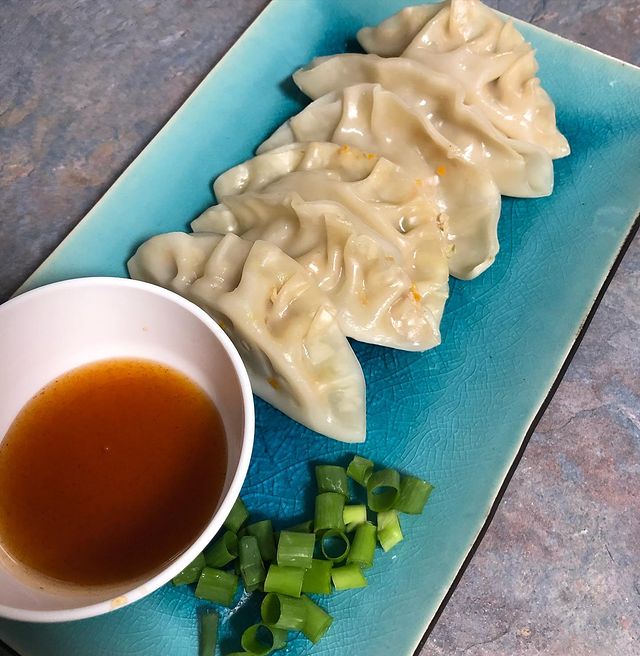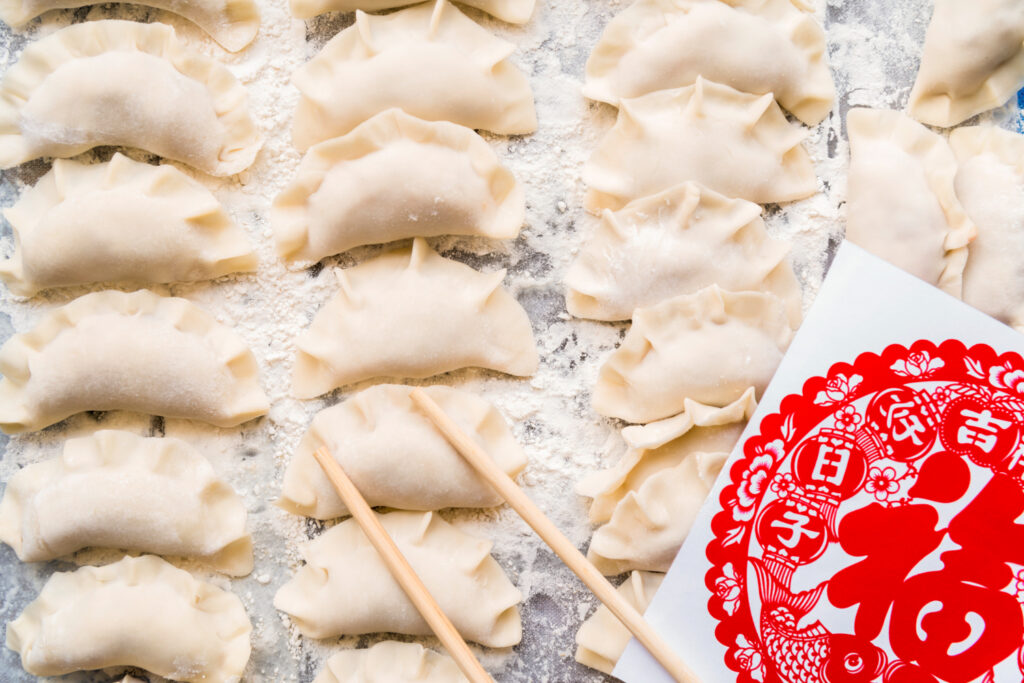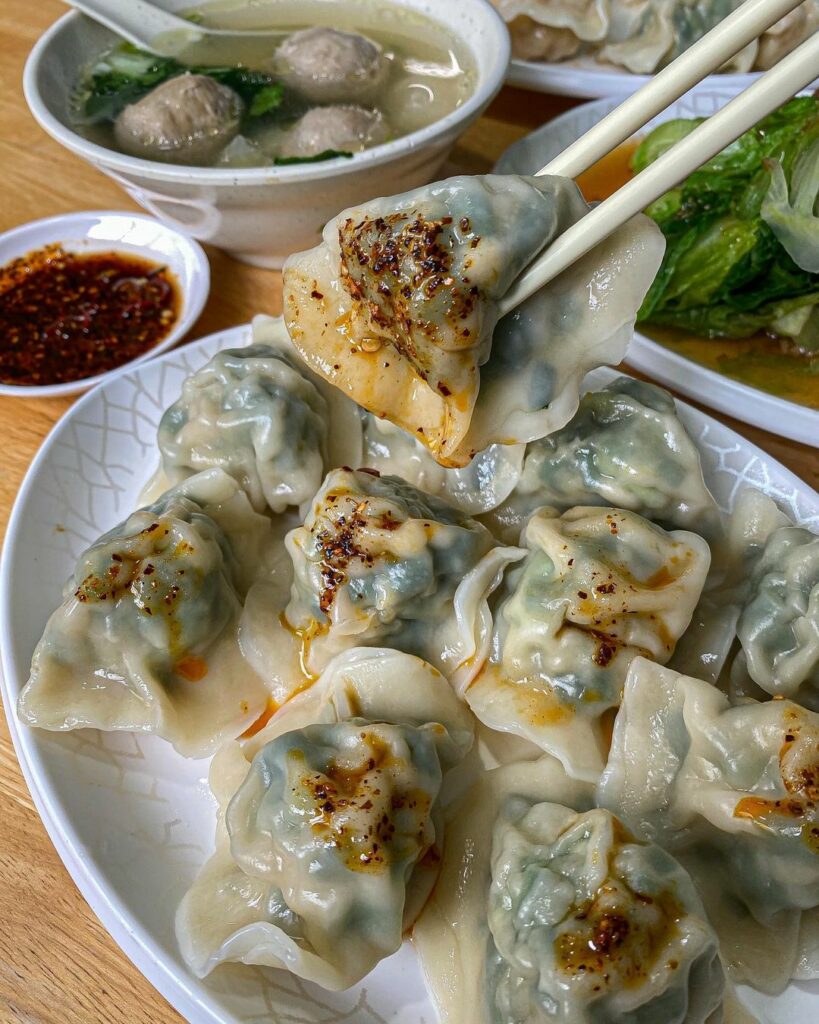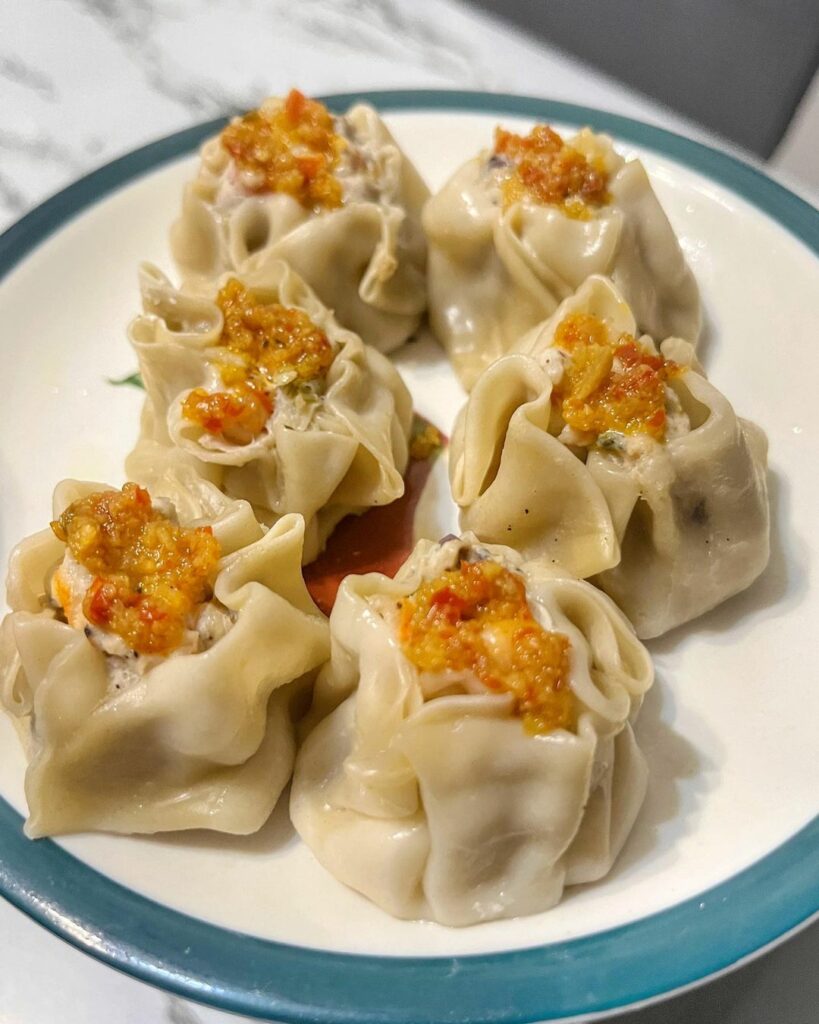Cooking dumplings to perfection requires understanding the optimal boiling time. As someone who has experimented extensively in the kitchen, I’ve come to appreciate the importance of timing when it comes to boiling dumplings. Getting the timing just right ensures that the dumplings achieve the desired texture and flavor.
Whether you’re dealing with fresh, frozen, or homemade dumplings, knowing how long to boil them is crucial. In this article, we will delve into the topic of “How long to boil dumplings” and explore various factors that influence cooking time.
By sharing my personal experience and insights, I hope to help you master the art of boiling dumplings and create a delightful culinary experience.
How long to boil dumplings?

The cooking time required to boil dumplings can vary depending on several factors, including the type of dumplings, their size, and thickness. As a general guideline, fresh dumplings typically require about 6 to 8 minutes of boiling, while frozen dumplings may need 10 to 12 minutes. It’s important to note that these are approximate times, and it’s always best to follow specific cooking instructions provided with the dumplings whenever available.
How long to boil fresh dumplings?
To boil fresh dumplings, start by bringing a pot of water to a rolling boil. Gently place the fresh dumplings into the boiling water, being careful not to overcrowd the pot. Reduce the heat to a simmer and cover the pot. Allow the dumplings to boil for the recommended time, usually between 6 and 8 minutes.
How long to boil frozen dumplings?
When boiling frozen dumplings, it is crucial to allocate a slightly longer cooking time compared to fresh dumplings. Generally, frozen dumplings require approximately 10 to 12 minutes of boiling to ensure thorough cooking.
To boil frozen dumplings, initiate by bringing a pot of water to a vigorous boil. With caution, add the frozen dumplings to the boiling water, being mindful not to overcrowd the pot. Reduce the heat to a gentle simmer and cover the pot. Allow the dumplings to boil for the recommended duration, typically around 10 to 12 minutes.
Why boil dumplings?

Dumplings are a beloved culinary delight that transcends borders and is popular in various cuisines worldwide. From Chinese jiaozi to Polish pierogi, dumplings have captured the hearts and taste buds of people everywhere.
One key aspect of preparing meals is the cooking process, which plays a vital role in achieving the perfect texture and flavor. Cooking dumplings for the right amount of time is essential to ensure that they are cooked through without becoming too soft or chewy.
What is the ideal boiling time for different dumpling types?

The ideal boiling times for different dumpling types vary based on their ingredients, size, and thickness. Here are the recommended boiling times for various types of dumplings:
Traditional Chinese dumplings
- Boiling time for pork and cabbage dumplings: Approximately 8-10 minutes.
- Boiling time for shrimp dumplings (har gow): Around 4-6 minutes.
- Boiling time for vegetarian dumplings: Generally, 6-8 minutes.
Eastern European dumplings
- Boiling time for pierogi: Typically, 8-10 minutes or until they float to the surface.
- Boiling time for pelmeni: Usually boiled for about 5-7 minutes or until they float.
- Boiling time for vareniki: Boil for approximately 8-10 minutes until they rise to the top.
South Asian dumplings
- Boiling time for momos: Cook for around 8-10 minutes or until the wrappers are translucent and the filling is cooked.
- Boiling time for modak: Boil for about 10-12 minutes until they turn slightly translucent.
- Boiling time for samosas: Fry or bake samosas instead of boiling them.
What is the difference between boiled and steamed dumplings?
Certainly! Here’s a table outlining the key differences between boiled and steamed dumplings:
| Boiled Dumplings | Steamed Dumplings | |
| Cooking Method | Cooked by submerging in boiling water | Cooked by exposing to steam |
| Texture | Soft and moist | Soft and tender |
| Cooking Time | Generally faster | Usually longer than boiling |
| Dumpling Wrapper | Can be thicker and sturdier | Often thinner and more delicate |
| Filling | Retains moisture and flavors | Retains natural flavors and nutrients |
| Cooking Vessel | Boiling pot or large saucepan | Steamer basket or bamboo steamer |
| Appearance | Dumplings may have a slightly translucent appearance | Dumplings may have a slightly opaque appearance |
| Variations | Can have crispy bottoms if pan-fried after boiling | Can be served as is, without additional cooking methods |
| Popular Dumpling Types | Chinese jiaozi, Italian tortellini, Polish pierogi | Chinese dim sum dumplings, Japanese gyoza, Thai shumai |
While both boiling and steaming are popular cooking methods for dumplings, they yield different textures and flavors. Boiled dumplings have a softer and moist texture, while steamed dumplings are softer and tender. The choice between boiling and steaming often depends on personal preference and the type of dumpling being prepared.
Factors affecting cooking time
Several factors can influence the cooking time of dumplings, and it’s important to consider them to achieve the desired results. The following factors play a significant role:
- Type of Dumplings: Different types of dumplings, such as fresh, frozen, homemade, or store-bought, may have varying cooking times. Fresh dumplings tend to cook faster than frozen ones, while store-bought dumplings may come with specific cooking instructions to ensure optimal results.
- Size and Thickness: The size and thickness of the dumplings can affect the cooking time. Larger or thicker dumplings may require a longer boiling time to ensure they are fully cooked all the way through.
- Altitude and Atmospheric Conditions: High altitudes and specific atmospheric conditions can impact the boiling point of water. In higher altitudes, where the boiling point is lower, it may take slightly longer to cook dumplings compared to sea-level cooking times. It’s important to account for such variations when determining the cooking time.
It is crucial to emphasize the significance of following specific cooking instructions whenever available. Different brands or recipes may provide recommended cooking times and methods for their specific dumplings, taking into consideration factors such as ingredients and desired texture.
Adhering to these instructions can help achieve optimal results and ensure that the dumplings are cooked thoroughly and safely.
Common mistakes to avoid when making boiled dumplings

When boiling dumplings, it’s important to avoid two common mistakes: overcooking and undercooking. Here’s a closer look at these mistakes and how to avoid them:
Overcooking dumplings
- Overcooking can result in dumplings that are mushy, overly soft, or even falling apart.
- To avoid overcooking, make sure to follow the recommended boiling times for your specific type of dumplings.
- Keep a close eye on the cooking process and test the dumplings for doneness by using visual cues or performing a texture and bite test.
- Once the dumplings are cooked to perfection, promptly remove them from the boiling water to prevent further cooking.
Undercooking dumplings
- Undercooking dumplings can lead to raw or doughy centers, making them unappetizing and potentially unsafe to consume.
- Ensure that you boil the dumplings for the recommended amount of time specified in the recipe or guidelines for your specific dumpling type.
- Test for doneness by cutting open a dumpling and checking if the filling is cooked and the dough is fully cooked through.
- If the dumplings are not fully cooked, return them to the boiling water and continue cooking for a few more minutes until done.
Tips for perfectly cooked dumplings
To achieve perfectly cooked dumplings, consider the following tips:
- Doneness Test: To ensure your dumplings are thoroughly cooked, cut open one dumpling and check if the filling is fully cooked and the dough is no longer doughy or raw. Adjust the cooking time accordingly if needed.
- Avoid Overcrowding: When cooking dumplings, make sure not to overcrowd the cooking vessel. Overcrowding can lead to uneven cooking and result in dumplings sticking together or taking longer to cook.
- Follow Instructions: If using store-bought dumplings, carefully follow the specific cooking instructions provided on the packaging. Different brands and types of dumplings may have variations in cooking times and methods.
- Personal Preference: Adjust cooking times based on personal preference for the desired texture of your dumplings. If you prefer softer dumplings, you may opt for slightly longer cooking times, while shorter cooking times will result in firmer dumplings.
FAQs
Can I overcook dumplings by boiling them for too long?
Yes, it is possible to overcook dumplings by boiling them for an extended period. Overcooking can lead to dumplings that become mushy, overly soft, or disintegrate in the boiling water. It is important to follow the recommended cooking times to achieve the desired texture and prevent overcooking.
What happens if I boil dumplings for less than the recommended time?
If dumplings are boiled for less than the recommended time, they may be undercooked and have a doughy or raw texture. Undercooked dumplings can be unpleasant to eat and pose a potential health risk if the filling is not cooked thoroughly. It is crucial to ensure that dumplings are boiled for the appropriate duration to achieve a fully cooked and safe-to-eat result.
Should I cover the pot while boiling dumplings?
Yes, it is generally recommended to cover the pot while boiling dumplings. Covering the pot helps to trap the steam, creating a moist environment that aids in cooking the dumplings evenly. It also helps to retain heat and prevent excessive evaporation, ensuring that the dumplings cook properly. However, it’s important to monitor the pot to prevent it from boiling over.
Are there any health risks associated with undercooking dumplings?
Yes, there can be health risks associated with undercooking dumplings, especially if the filling contains raw or undercooked ingredients such as meat or seafood.
Undercooked dumplings may contain harmful bacteria or parasites that can cause foodborne illnesses. It is important to ensure that dumplings are cooked thoroughly to eliminate any potential pathogens and ensure food safety.
Consuming undercooked dumplings can increase the risk of foodborne illnesses, so it is crucial to follow proper cooking times and guidelines to ensure they are fully cooked.
How do I determine if the dumplings are cooked enough after boiling?
To determine if the dumplings are cooked enough after boiling, you can perform a simple test. Cut open one dumpling and check the filling and dough. The filling should be fully cooked, hot, and not raw.
The dough should be cooked through and no longer doughy or raw in the center. If the filling and dough meet these criteria, the dumplings are cooked enough. Adjust the cooking time accordingly if they are not fully cooked.
Can I reheat boiled dumplings without compromising their texture?
Yes, you can reheat boiled dumplings without significantly compromising their texture. To reheat, you can steam the dumplings briefly for a few minutes or microwave them with a bit of water to help retain moisture.
Be careful not to overheat or overcook them, as this can cause the dumplings to become mushy. Reheating methods may slightly alter the texture, but proper reheating techniques can help maintain the dumplings’ overall quality. It is best to consume freshly cooked dumplings for the optimal texture, but reheating can be done effectively for leftovers or pre-cooked dumplings.
Can I boil dumplings in broth or flavored liquid for enhanced taste?
Yes, you can absolutely boil dumplings in broth or flavored liquid to enhance their taste. Using broth instead of plain water adds flavor to the dumplings as they cook. You can choose a broth that complements the flavors of the dumplings, such as chicken, vegetable, or mushroom broth.
Alternatively, you can use a flavored liquid like a seasoned sauce or aromatic broth to infuse the dumplings with additional taste. Boiling dumplings in broth or flavored liquid can result in a more flavorful and enjoyable culinary experience.
Are there any special considerations when boiling gluten-free dumplings?
When boiling gluten-free dumplings, there are a few special considerations to keep in mind. First, ensure that the ingredients used for the dumpling dough and filling are gluten-free. This includes using gluten-free flour, starches, and other suitable ingredients. Follow gluten-free recipes or use pre-made gluten-free dumplings that are specifically labeled as such.
Additionally, since gluten-free dough can be more delicate and have a different texture than traditional dough, it is crucial to handle it gently. Avoid overworking the dough, as it may become too sticky or fragile. When boiling gluten-free dumplings, monitor the cooking time closely, as they may require slightly less time to cook compared to regular dumplings.
Is there a difference in boiling time for dumplings with different fillings?
Yes, there can be a difference in boiling time for dumplings with different fillings. Dumplings with fillings that contain raw ingredients, such as ground meat or seafood, may require a longer boiling time to ensure the filling is thoroughly cooked.
On the other hand, dumplings with precooked fillings, such as vegetables or cooked meat, may require a slightly shorter boiling time since the filling is already cooked. It is essential to consider the specific ingredients in the filling and follow the recommended cooking times to ensure the dumplings are cooked properly.
Conclusion
In the end, determining the ideal boiling time for dumplings is crucial to achieving the desired texture and flavor. Whether you’re cooking fresh or frozen dumplings, following specific cooking instructions and considering factors such as size, thickness, and type of dumplings is essential.
Boiling dumplings allows for even cooking, retaining moisture, and creating tender morsels bursting with delicious fillings. Remember that the recommended boiling times provide a general guideline, and personal preferences may require adjustments.
By mastering the art of boiling dumplings and understanding the nuances of cooking times, you can create culinary delights that leave taste buds craving more. So, the next time you ask, “How long to boil dumplings?” remember to tailor the cooking time accordingly and savor the delightful results.